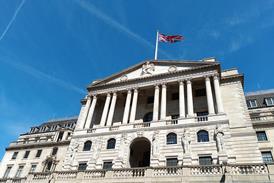The importance of the employer covenant has helped shape UK pensions regulation, writes Arabella Slinger of the Society of Pension Professionals. The Pension Schemes Bill shows there is no sign of its importance reducing.

While the concept of a pension is embedded deep in UK history, the defined benefit (DB) pension system really developed apace alongside the welfare state after the Second World War and throughout the 20th century.
However, the framework for regulation and protection – and in particular the concept of employer covenant – only recently came of age.
The catalyst was a small number of spectacular corporate failures, starting with the embezzlement from the Mirror pension fund by Robert Maxwell in 1991.
This scandal, and the plight of employees following high-profile insolvencies such as Allied Steel & Wire, led to significant legislation being introduced, including setting up the Pension Protection Fund and the Pensions Regulator (TPR). It also led to the introduction of the Scheme Specific Funding regime, requiring schemes to ensure they had adequate funds to meet their obligations and raising the bar for employers exiting a DB pension scheme.
Under the new regime, the covenant had to be considered as part of setting valuation assumptions and agreeing on a recovery plan. In addition to substantiating a covenant rating, affordability negotiations were hard fought. In the context of transactions, clearance applications were initially high, although volumes waned as it became clear that TPR’s ability to take action was more constrained than initially feared.
The impact of the global financial crisis
With increasing deficits and funding requirements, not least driven by the fall in gilt yields following the financial crisis of 2007-09, pension schemes began to weigh more heavily on corporate cash flows, impacting the scope for investment and growth.
This led to greater focus on understanding the correlation of risks between the sponsor and the scheme, known as integrated risk management, and new covenant solutions to extend the period over which deficits could be recovered while enhancing a scheme’s access to value and protecting against downside events.
Contingent protections ranged from security and guarantees to investment underpins and more complex arrangements, with pension scheme creditors acknowledged as a major stakeholder.
In 2014, a new funding code refined the definition of covenant to focus on the legal obligation and financial ability of an employer to support a scheme. TPR’s new objective, “to minimise any adverse impact on the sustainable growth of an employer”, supported greater flexibility on recovery plans, responding to corporate concerns.

Despite a more robust industry approach, scrutiny and criticism followed the collapse of BHS and Carillion, which saw widespread frustration at perceived governance failures in protecting members’ benefits – not least given the scale of returns to shareholders.
This led to the Pensions Act 2021, which further boosted TPR’s powers and introduced criminal sanctions, as well as another funding code, by way of the recently introduced Funding and Investment Regulations.
Covenant is now defined for the first time in law, and TPR has provided much greater detail as to how to assess the ability of the covenant to support the scheme and the risk it is running over its journey to the new target of low dependency. This has introduced the concepts of reliability, longevity, and supportable risk.
Nonetheless, by the time the new code was implemented, significantly improved funding positions and derisked investment portfolios meant that for a lot of schemes, covenant reliance centred on supporting residual risk and providing a ‘home’ for the scheme unless and until bought out.
The Pension Schemes Bill and the future of covenant
The new Pension Schemes Bill has, however, brought covenant back into the spotlight with the prospect of run-on for surplus release.
The bill states that provision will be made for trustees to introduce a power to return surplus, subject to conditions they consider appropriate. In addition, a threshold for surplus release will be set, widely expected to be ‘low dependency’.
“Trustees will need to weigh any release against the paramount consideration of members’ security.”
Tension exists between this measure and the buyout threshold referenced in the Pensions Act 2021. Trustees will need to weigh any release against the paramount consideration of members’ security. Funding buffers and appropriate covenant support, including contingent protections, can provide the necessary comfort, but such support will need to be tested carefully against a range of scenarios to ensure that it delivers the expected value when called upon.
It is possible to envisage difficult discussions between employers and trustees where surplus has been identified as a key source of value in a transaction, or where surplus release is requested to support the ongoing liquidity of weak employers.
This is a pivotal time for DB pension schemes, with the Pension Schemes Bill fundamentally reshaping strategy options for schemes. Robust governance will continue to be a prerequisite, but once again, covenant will be central to ensuring members receive their benefits.
Arabella Slinger is joint chair of the covenant committee at the Society of Pension Professionals.






















